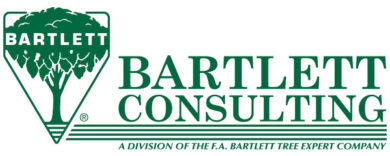Successful Scenes: Living Architecture — Up on the Roof
I receive many advertisements about products, techniques, and learning opportunities that pertain to my profession. Often the seminars advertised are far away and expensive. However, an opportunity showed itself a few weeks ago that seemed tailor made for me.
Green Roofs for Healthy Cities was presenting “Green Roofs 101” in Nashville, just a few minutes drive from my office. This presentation promised to be, “an introductory, full-day lesson about various types of green roofs, the costs and benefits of implementing them, evaluating the performance criteria of various elements of green roofs and their relevance to the design intent.” That sounded like a lot of information for one day, but it was very tempting. I have a project coming up in which a green roof is a major component, so, I signed up, thinking it would be “beneficial.” I never dreamed that it would be fascinating.
The first thing I learned was that a green roof is, “a contained green space on top of a human-made structure, above or at grade. Each green roof is unique and often designed to achieve multiple objectives and performance results.” Along with me in this class were a few landscape contractors, a couple of growers of green roof plants, some sales representatives, an environmental engineer and a couple other landscape architect types. This assortment is a fair representation of the many team members who should participate in a green roof design, although we really needed an architect as well. Our combined interests and approaches in learning were anticipated by our very capable instructor, Bill Foley of Tremco, a producer of green roof membranes. I learned that it takes a lot of expertise to raise the green roof.
The whole system of green roofing is so compelling, so “green,” for the following reasons:
- The plants and growing medium shade the roofing materials, reducing both building heat gain and the Urban Heat Island effect.
- Covering a roof dramatically reduces UV degradation of roofing materials, thus creating a longer roof lifespan.
- When roofing materials last longer, less waste goes into landfills.
- The plants and growing medium insulate said roof in both heat and cold much more effectively than roofs without plants, thus reducing energy costs for heating and cooling the affected buildings.
- The green roof system is very efficient at noise reduction.
- Green roofs create interesting scenes and usable space visually and functionally, where otherwise would be just an asphalt desert.
- The plants on a green roof clean the air.
- The growing medium captures rain that would otherwise speed off to storm sewers and detention basins, so the green roof reduces storm water quantity and improves its quality.
- Green roofs can be so effective at storm water management that their use may reduce the need for costly detention basins.
The concept of going green on the roof seems most complete when paired with irrigation using storm water collected in on-site cisterns. Cistern water is great for irrigation of the green roof in times of need, for several reasons. It is “free” water, non-treated, and it contains nitrogen brought from the air through which it passed as rain. Irrigation for the green roof can take place through drip emitters or with subsurface applications through a line source or a capillary mat. For every sort of green roof and the plants that live there, an irrigation solution exists or can be created that assists in the roof’s success.
As with some other things related to urban living, Europeans explored green roofs in a more public way some years before us in the United States. There are roofs in Germany, for instance, that date back to the 1970s, still functional and effective. How long can those systems last? We don’t know, but the typical non-green roof lasts about 15 to 20 years. Can you say, “Already doubled the lifetime?” Presumably, there is an endpoint to a manmade structure and roof, but 40 years is about the length of anyone’s professional career. Did the instigators of those successful roofs live long enough to see how well their designs have succeeded? Have the roofs outlived the inventors?
Not often will you read or hear of me admitting that I am ignorant about something to do with plants. I have been at home with plants ever since I can remember, and am generally regarded as one who intuitively understands what each plant needs to thrive. I usually specify plants for a planting plan based on their microclimatological needs, as well as the architectural effects they will bring to a project. I thought I knew what to place where. However, since participating in the Green Roof 101 class, I look at plants with fresh eyes. I find myself considering each one’s value as a candidate for a new life on a green roof. The most basic lesson I learned is that there is more to greening a roof than can be learned in one day, or possibly one lifetime.
“Green Roof 201” is advertised for presentation in a few weeks, and I am already arranging my schedule around it. This class promises to help me match my design to my client’s requirements, the vagaries of structural loading concerns, and issues with drainage and erosion prevention. I am going to get a grip on how to participate in the design and construction schedule, and I am going to learn about who to expect on the design team. There is room for a lot of expertise on the roof, and I plan to be up there with the rest of them.
For a glimpse into the human life on a green roof, check out the live Web cam of the American Society of Landscape Architects’ headquarters by visiting http://www.asla.org/land/050205/greenroofwebcam.html
Elinor Bennett Markle, RLA, ASLA, is a landscape architect practicing in Kentucky and Tennessee. She can be reached via e-mail at lnrmarkle@yahoo.com.


